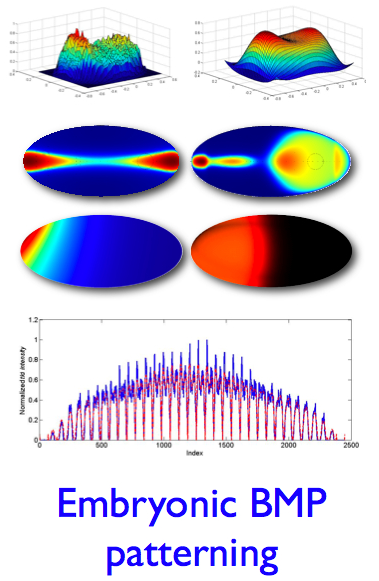Dorsal surface patterning by Bone Morphogenetic Proteins:
The Bone Morphogenetic Protein (BMP) pathway provides an excellent instructive system for understanding how a complex network of controlling inputs regulates the timing, amplitude and interpretation of signals during development. In Drosophila blastoderm embryonic patterning, the BMP ligands Decapentaplegic (Dpp) and Screw (Scw) dynamically specify gene expression along the dorsal surface prior to gastrulation. In this pathway, dorsally secreted Dpp/Scw is transported, and its signaling activity attenuated by, the extracellular binding proteins Short gastrulation (Sog) and Twisted gastrulation (Tsg). When Dpp/Scw is bound to Sog/Tsg, the metalloprotease Tolloid (Tld) processes Sog, which releases Dpp/Scw to bind to Type I BMP receptors. The bound Type I receptors recruit Type II receptors to form a heterotetrameric signaling complex, which phosphorylates the transcription factor Mad. This in turn initiates transcription of a positively regulated component that enhances the ligand-receptor interactions. Signal levels, robustness to perturbations, and timing could be regulated by any one of these extra- and intracellular processes, making it difficult to understand how a particular mutation leads to a patterning defect. Therefore a full 3D computational model of the blastoderm embryo was developed that predicts the output distributions of proteins and pMad in response to genetic perturbations that change the quantity, distribution, or activity of the BMP regulators.
